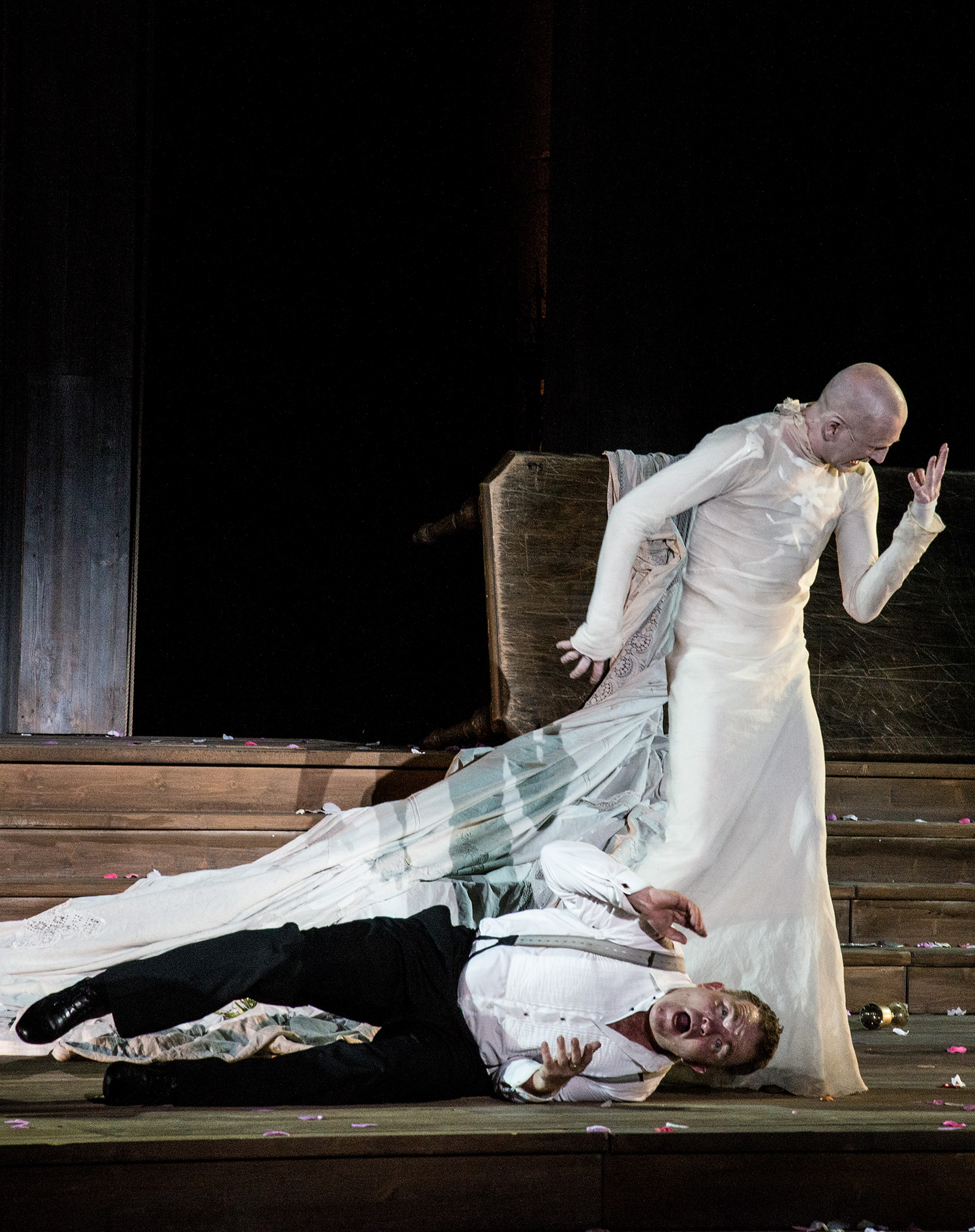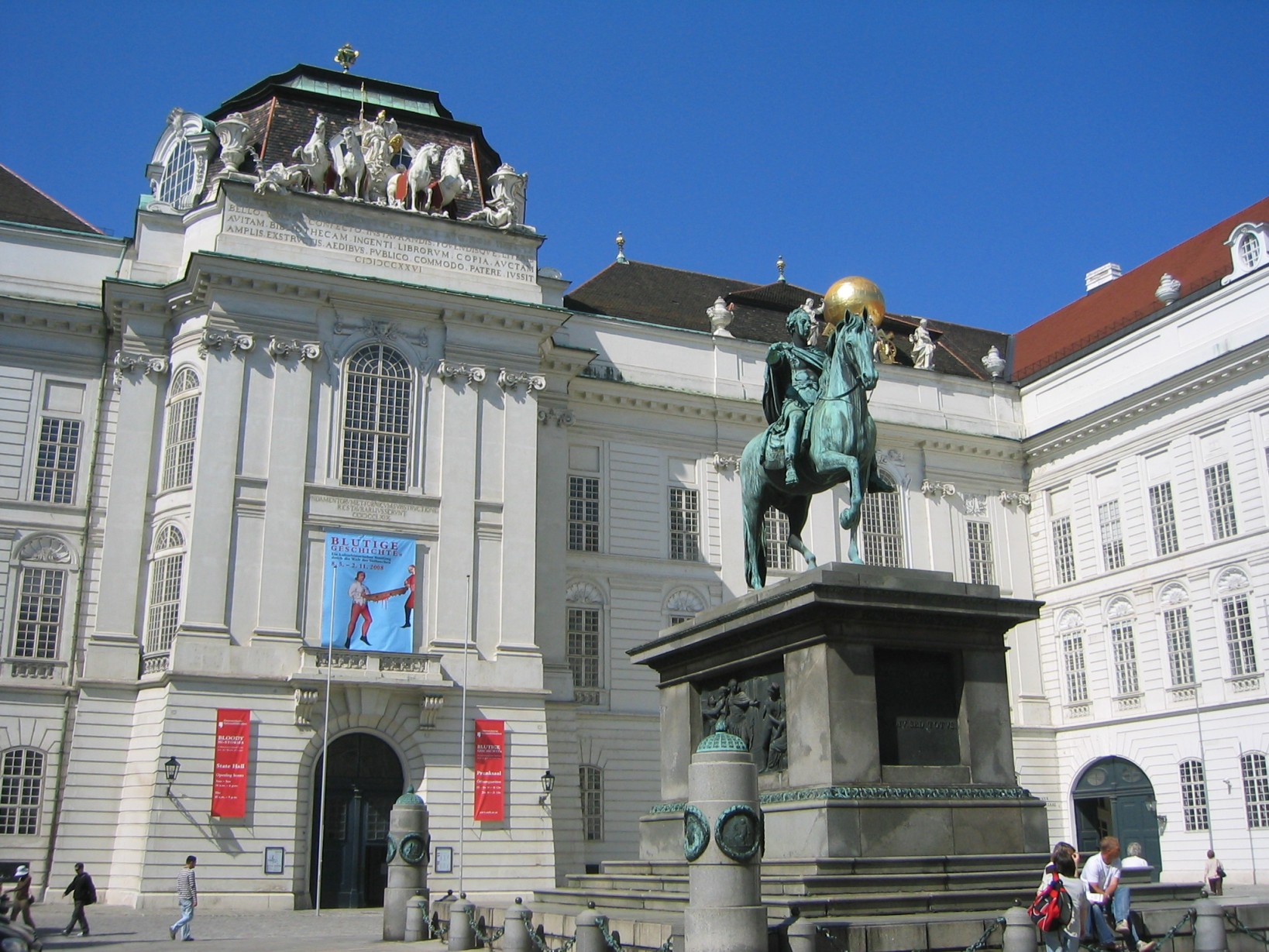|
Andrea Mayer
Andrea Mayer (born April 19, 1962), during her marriage to Andrea Ecker, is an Austrian politician and former cabinet director of the Presidential Chancellery. Since May 20, 2020, she has been State Secretary in the Federal Ministry for Arts, Culture, the Civil Service and Sport in Cabinet Kurz II, nominated by the Greens. There she is employed by Vice-Chancellor Werner Kogler and responsible for the arts and culture departments. Career Born in Amstetten, Lower Austria, Mayer studied German and history as well as jurisprudence at the University of Vienna and graduated with the academic degree Magistra. She then worked in the private sector for a few years. In 1993 she became a member of the staff of Education and Culture Minister Rudolf Scholten. She later moved to the Ministry of Science, where she was responsible for innovation and research. In 2007, she was appointed Minister of Culture Claudia Schmied appointed as head of the art section. In 2015, following an advertisement ... [...More Info...] [...Related Items...] OR: [Wikipedia] [Google] [Baidu] |
Federal Ministry For Arts, Culture, The Civil Service And Sport
The Ministry of the Arts, Culture, the Civil Service and Sport (German: ''Bundesministerium für Kunst, Kultur, öffentlichen Dienst und Sport'' or ''BMKÖDS'') is the government ministry of Austria in charge of the arts and sport as well as public administration and personnel questions that do not fall within the jurisdiction of another ministry. It bears responsibility for the management of museums and theatres, the maintenance of landmarks and historical sites, and the promotion of Austrian cinema. History Even though the Republic of Austria has always had a large public sector and a considerable number of career civil servants, the country does not usually maintain a dedicated civil service ministry. Traditionally, the interest of Austria's civil servants (''Beamte'') were protected by their strong union (the ''Beamtengewerkschaft'') and by the fact that civil servants were overrepresented among the upper ranks of every major political party. Public employment policy was set, ... [...More Info...] [...Related Items...] OR: [Wikipedia] [Google] [Baidu] |
Salzburg Festival
The Salzburg Festival (german: Salzburger Festspiele) is a prominent festival of music and drama established in 1920. It is held each summer (for five weeks starting in late July) in the Austrian town of Salzburg, the birthplace of Wolfgang Amadeus Mozart. One highlight is the annual performance of the play '' Jedermann'' (''Everyman'') by Hugo von Hofmannsthal. Since 1967, an annual Salzburg Easter Festival has also been held, organized by a separate organization. History Music festivals had been held in Salzburg at irregular intervals since 1877 held by the International Mozarteum Foundation but were discontinued in 1910. Although a festival was planned for 1914, it was cancelled at the outbreak of World War I. In 1917, Friedrich Gehmacher and Heinrich Damisch formed an organization known as the ''Salzburger Festspielhaus-Gemeinde'' to establish an annual festival of drama and music, emphasizing especially the works of Mozart. At the close of the war in 1918, the festival' ... [...More Info...] [...Related Items...] OR: [Wikipedia] [Google] [Baidu] |
Social Democratic Party Of Austria Politicians
Social organisms, including human(s), live collectively in interacting populations. This interaction is considered social whether they are aware of it or not, and whether the exchange is voluntary or not. Etymology The word "social" derives from the Latin word ''socii'' ("allies"). It is particularly derived from the Italian ''Socii'' states, historical allies of the Roman Republic (although they rebelled against Rome in the Social War of 91–87 BC). Social theorists In the view of Karl MarxMorrison, Ken. ''Marx, Durkheim, Weber. Formations of modern social thought'', human beings are intrinsically, necessarily and by definition social beings who, beyond being "gregarious creatures", cannot survive and meet their needs other than through social co-operation and association. Their social characteristics are therefore to a large extent an objectively given fact, stamped on them from birth and affirmed by socialization processes; and, according to Marx, in producing and reproducin ... [...More Info...] [...Related Items...] OR: [Wikipedia] [Google] [Baidu] |
1962 Births
Year 196 ( CXCVI) was a leap year starting on Thursday (link will display the full calendar) of the Julian calendar. At the time, it was known as the Year of the Consulship of Dexter and Messalla (or, less frequently, year 949 ''Ab urbe condita''). The denomination 196 for this year has been used since the early medieval period, when the Anno Domini calendar era became the prevalent method in Europe for naming years. Events By place Roman Empire * Emperor Septimius Severus attempts to assassinate Clodius Albinus but fails, causing Albinus to retaliate militarily. * Emperor Septimius Severus captures and sacks Byzantium; the city is rebuilt and regains its previous prosperity. * In order to assure the support of the Roman legion in Germany on his march to Rome, Clodius Albinus is declared Augustus by his army while crossing Gaul. * Hadrian's wall in Britain is partially destroyed. China * First year of the '' Jian'an era of the Chinese Han Dynasty. * Em ... [...More Info...] [...Related Items...] OR: [Wikipedia] [Google] [Baidu] |
Living People
Related categories * :Year of birth missing (living people) / :Year of birth unknown * :Date of birth missing (living people) / :Date of birth unknown * :Place of birth missing (living people) / :Place of birth unknown * :Year of death missing / :Year of death unknown * :Date of death missing / :Date of death unknown * :Place of death missing / :Place of death unknown * :Missing middle or first names See also * :Dead people * :Template:L, which generates this category or death years, and birth year and sort keys. : {{DEFAULTSORT:Living people 21st-century people People by status ... [...More Info...] [...Related Items...] OR: [Wikipedia] [Google] [Baidu] |
Social Democratic Party Of Austria
The Social Democratic Party of Austria (german: Sozialdemokratische Partei Österreichs , SPÖ), founded and known as the Social Democratic Workers' Party of Austria (german: link=no, Sozialdemokratische Arbeiterpartei Österreichs, SDAPÖ) until 1945 and later the Socialist Party of Austria (german: link=no, Sozialistische Partei Österreichs) until 1991, is a social-democratic political party in Austria. Founded in 1889, it is the oldest extant political party in Austria. Along with the Austrian People's Party (ÖVP), it is one of the country's two traditional major parties. It is positioned on the centre-left on the political spectrum. Since November 2018, the party has been led by Pamela Rendi-Wagner. It is currently the second largest of five parties in the National Council, with 40 of the 183 seats, and won 21.2% of votes cast in the 2019 legislative election. It holds seats in the legislatures of all nine states; of these, it is the largest party in three (Burgenland, ... [...More Info...] [...Related Items...] OR: [Wikipedia] [Google] [Baidu] |
Zeit Im Blid
Zeit is the German word meaning ''time'' or ''era''. Zeit may refer to: Publications * ''Die Zeit'', German national weekly newspaper of record ** ''Zeit Wissen'', bi-monthly popular science magazine published by ''Die Zeit'' * ''Theater der Zeit'', German monthly magazine on theatre and politics * ''Zeit im Bild'', the national television news program of Austria Businesses and organizations * ZEIT-Stiftung, charitable foundation named after ''Die Zeit'' * Vercel, formerly known as Zeit. Film and television * ''Zeit der Störche'', a 1971 East German film * ''Zeit der Wünsche'', a 2005 German television film * ''Zeit genug'', a 1982 German television series * ''Zeit zu leben'', a 1969 East German film Other works * ''Die Zeit, die Zeit'', 2012 novel by Martin Suter * ''Zeit'' (Rammstein album), 2022 ** "Zeit" (Rammstein song), its title song * ''Zeit'' (Tangerine Dream album), 1972, or its title song * ''Zeit²'', a 2011 computer game by Ubisoft * "Zeit", a song performed by ... [...More Info...] [...Related Items...] OR: [Wikipedia] [Google] [Baidu] |
Vienna Volksoper
The Vienna Volksoper (''Volksoper'' or ''Vienna People's Opera'') is an opera house in Vienna, Austria. It produces three hundred performances of twenty-five German language productions of opera, operetta, musicals, and ballet, during an annual season which runs from September through June. History Foundation The Volksoper was built in 1898 as the ''Kaiserjubiläum-Stadttheater'' (Kaiser's Jubilee Civic Theatre), originally producing only plays. Because of the very brief construction period (10 months) the first director Adam Müller-Gutenbrunn had to start with debts of 160,000 florins. After this inauspicious startup the ''Kaiserjubiläum-Stadttheater'' had to declare bankruptcy five years later in 1903. Music theater from 1903 to 1950s On 1 September 1903, Rainer Simons took over the house and renamed it the ''Kaiserjubiläum-Stadttheater - Volksoper'' (public opera). His intention was to continue the production of plays but also establish series of opera and operetta. ... [...More Info...] [...Related Items...] OR: [Wikipedia] [Google] [Baidu] |
Landestheater Niederösterreich
The Landestheater Niederösterreich is a Schauspielhaus in the Lower Austrian provincial capital St. Pölten. History In the autumn of 1820, a military prison converted by master builder Josef Schwerdtfeger on today's Rathausplatz was opened as the first permanent theatre in St. Pölten, which also served as a ballroom. The first tenant was the theatre entrepreneur Leopold Hoch, who was followed by others. The theatre is mentioned in a guidebook from the Biedermeier period, the work ' by from 1835: :''The newly built theatre is large enough for the city, may not be unfriendly with its half dozen boxes and its gallery, if it were better illuminated.'' After a closure for financial reasons in the 1847/1848 season, the theatre was sold to the city and thus became a municipal theatre. After the Ringtheater fire in 1881, the house was closed as a theatre due to lack of fire safety and from then on was only used as a ballroom. In 1893, the building was completely rebuilt accordi ... [...More Info...] [...Related Items...] OR: [Wikipedia] [Google] [Baidu] |
Austrian National Library
The Austrian National Library (german: Österreichische Nationalbibliothek) is the largest library in Austria, with more than 12 million items in its various collections. The library is located in the Neue Burg Wing of the Hofburg in center of Vienna. Since 2005, some of the collections have been relocated within the Baroque structure of the Palais Mollard-Clary. Founded by the Habsburgs, the library was originally called the Imperial Court Library (german: Kaiserliche Hofbibliothek); the change to the current name occurred in 1920, following the end of the Habsburg Monarchy and the proclamation of the Austrian Republic. The library complex includes four museums, as well as multiple special collections and archives. Middle Ages The institution has its origin in the imperial library of the Middle Ages. During the Medieval period, the Austrian Duke Albert III (1349–1395) moved the books of the Viennese vaults into a library. Albert also arranged for important works from ... [...More Info...] [...Related Items...] OR: [Wikipedia] [Google] [Baidu] |
Kunsthistorisches Museum
The Kunsthistorisches Museum ( "Museum of Art History", often referred to as the "Museum of Fine Arts") is an art museum in Vienna, Austria. Housed in its festive palatial building on the Vienna Ring Road, it is crowned with an octagonal dome. The term ''Kunsthistorisches Museum'' applies to both the institution and the main building. It is the largest art museum in the country and one of the most important museums worldwide. Emperor Franz Joseph I of Austria-Hungary opened the facility around 1891 at the same time as the Natural History Museum, Vienna which has a similar design and is directly across Maria-Theresien-Platz. The two buildings were constructed between 1871 and 1891 according to plans by Gottfried Semper and Baron Karl von Hasenauer. The emperor commissioned the two Ringstraße museums to create a suitable home for the Habsburgs' formidable art collection and to make it accessible to the general public. The buildings are rectangular in shape, with symme ... [...More Info...] [...Related Items...] OR: [Wikipedia] [Google] [Baidu] |


